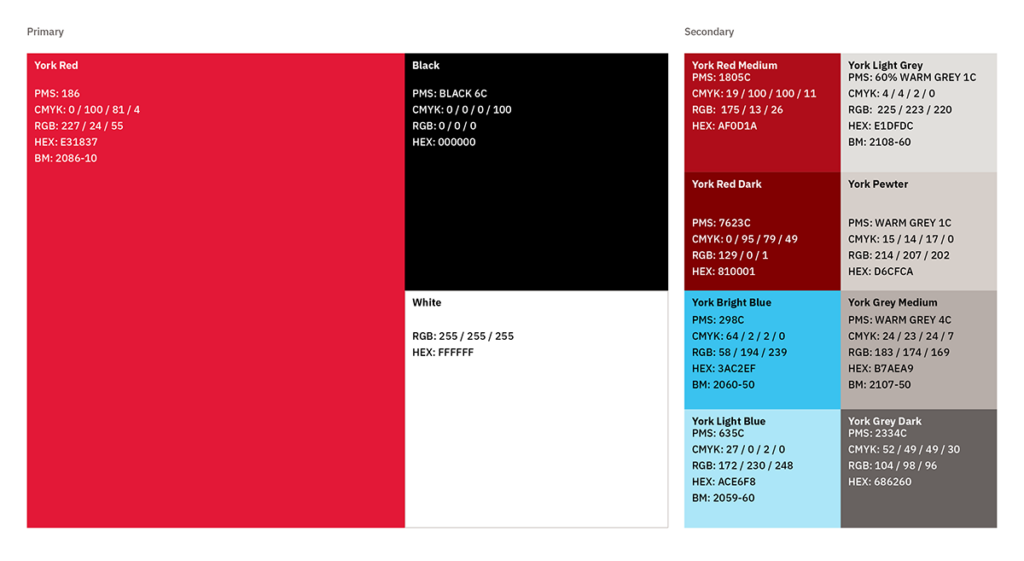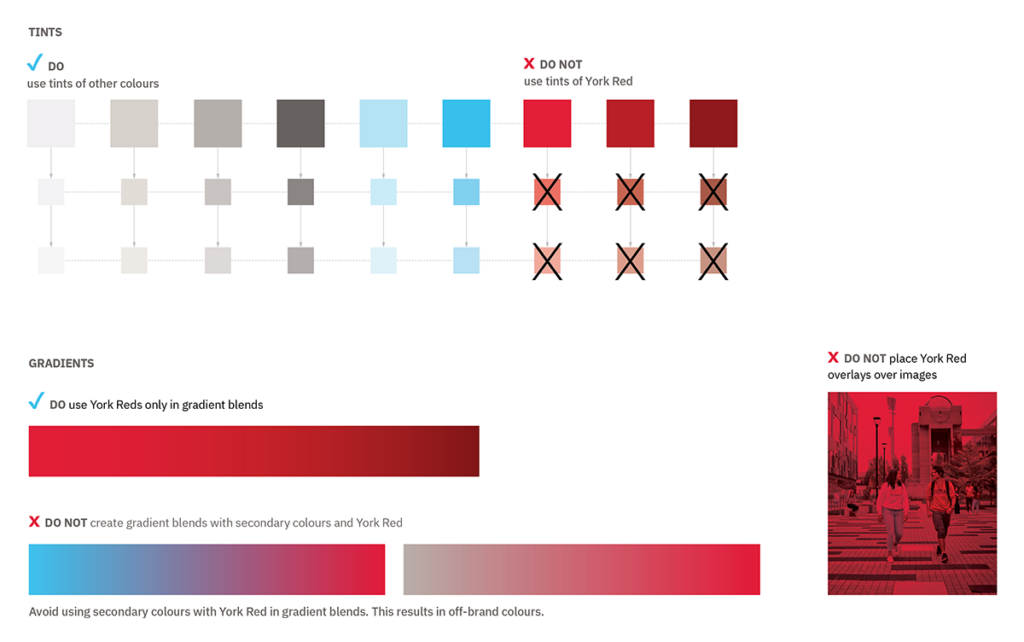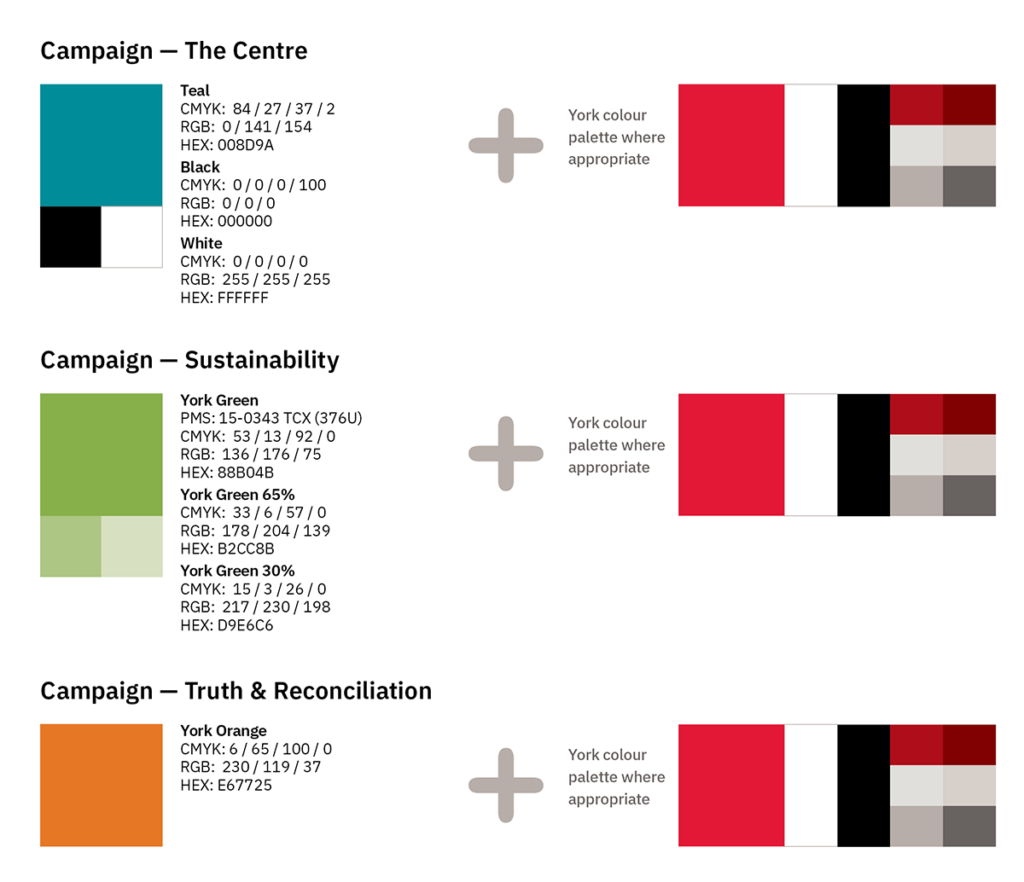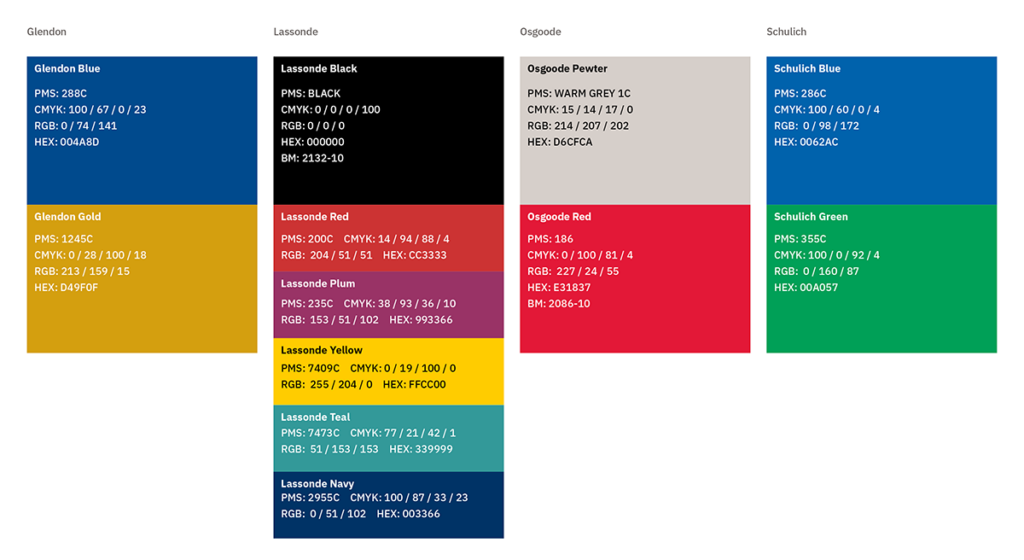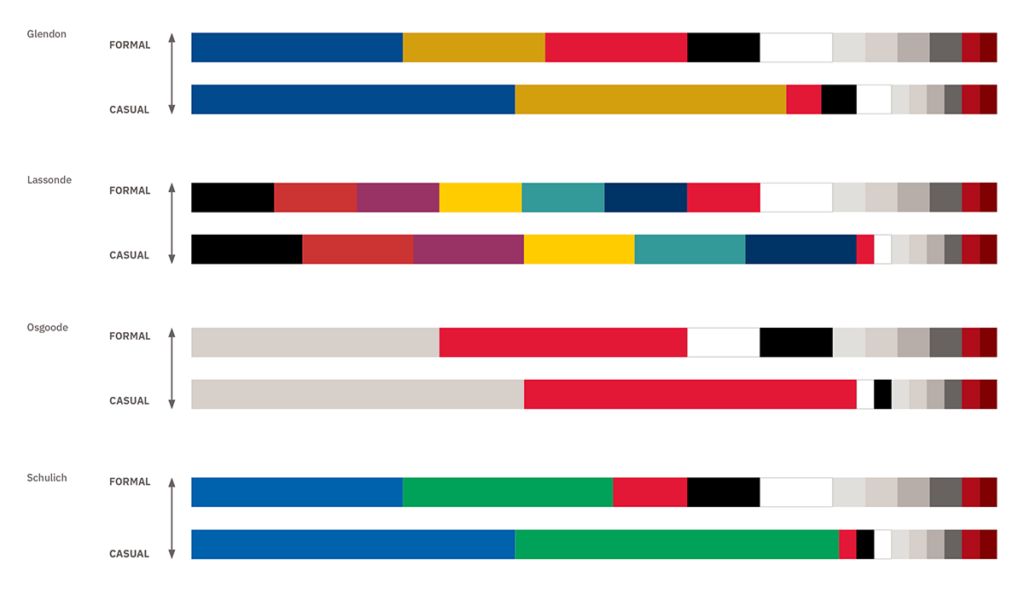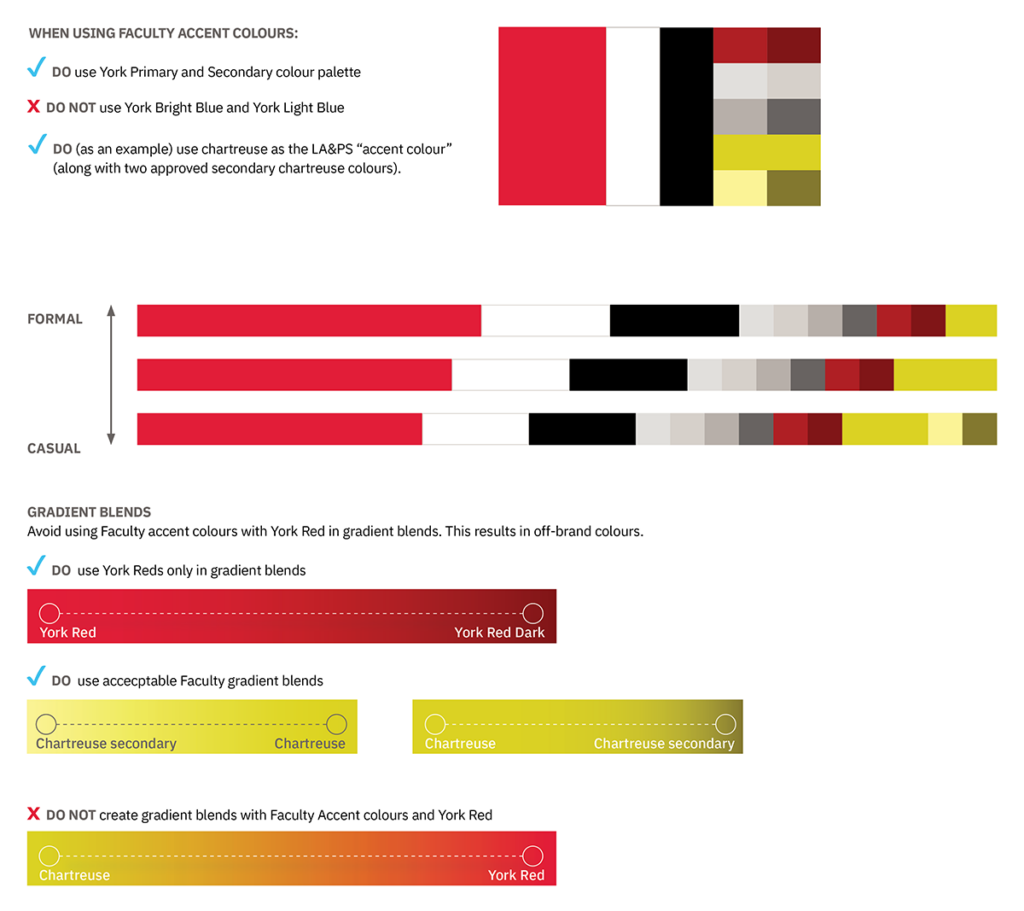Evoke meaning and emotion
Choosing colour for a brand identity is far more involved than just finding a pleasing palette. Colour has the ability to evoke strong emotions and meaning. Bright colours can invigorate, while muted ones are calming. Fonts and their varied shapes and thicknesses reflect personality in much the same way.
York Colours
Our colour palette reflects our positive emotional and psychological stance, and colour helps our stakeholders and prospects recognize the York U brand in the marketplace. Learn more below on how to effectively use our colour palettes.
Sub-brand Colours
Glendon, Lassonde, Osgoode and Schulich have long-established colour palettes that are strongly associated with their identities. More information about how to utilize these palettes can be found on your Faculty Assets page.
Faculty Colours
A secondary accent palette representing York’s individual Faculties provides the opportunity for greater expression and consistency within the York brand. Inspired by our campuses, each colour has been chosen for the way it works in harmony with York Red and its connection to the message of positive change that the University exudes.
The palette acknowledges those with visual impairment and, as such, adheres to accepted accessibility standards set out in the Accessibility for Ontarians with Disabilities Act (AODA).

